Where do ideas come from?
It’s something kids always ask at school visits, and adults, too, at readings and conferences. On the surface, it seems like an easy enough question. But sometimes it’s also deeply personal. Often when a reader nervously asks me this question, what I sense they really want to know is, “Did this happen to you?”
In most cases, the answer to that question is less easy to answer. We all write what we know to some degree, but as fiction writers we also know the importance of not relying too heavily on “what really happened” to craft a novel. The truth is stranger than fiction! Often, it’s a lot messier, too. And, speaking of honesty, painful to talk about. But… that’s why we write, isn’t it? To shed light on things we know need to be exposed? To inspire dialogue about things we need to talk about?
My newest book, Someone’s Gonna End Up Crying (coming May 27), harnesses many of my own childhood experiences. Most involved getting into the kind of mischief that led my mom to sing, “Someone’s Gonna End up Cryyyyy-ingggggg!” to me, my sister and brother. She always knew! The Barrel Dare (featured in the book) is a great example. Just like Maple and her siblings, I crawled into a cardboard barrel and got pushed down a hill! I still remember how it smelled inside and how dizzy I felt when I hit the fence.
When I was 48 and told my mother I’d taken up roller derby, you can probably guess what she sang at me. After I broke my leg playing the sport I loved and was supposed to be vacationing in Maine with her, my dad, and the rest of my extended family, she sent me an I-Told-You-So kind of text from the beach while I was sitting in a borrowed recliner with my leg in a giant cast. “Your father and I came up with the perfect title for your next book!” she texted.
I didn’t need to wait for her to hit send before knowing what it was. Very funny, I thought. And yet… hmm… maybe…
Shortly after that, the pandemic hit. At the same time, my aging in-laws (who lived in an apartment attached to our house) became increasingly house-bound and needed round-the-clock care, which fell to me and my husband due to the health-care worker shortage. Even if I had time to write, words failed me in this time of grief, exhaustion, fear, and uncertainty. After their deaths, I struggled to find a way back into writing.
I joined an on-line meditation group for children’s book creators hosted by Gareth Hinds and led by a rotation of other creators. At first, I diligently tried to follow “the rules” for meditation. I counted my breaths, I tried to free my mind of the constant worry and sadness that lived there. But more often than not, I found myself sitting on my yoga mat, silently sobbing. We lost so much during those awful years. My in-laws. Our beloved 19-year-old cats. Our troubled dog. My own father was showing early signs of needing more care, and I was terrified of what was to come. Then one day, Padma Venkatraman was leading the workshop and I happened to reach for my notebook. Instead of sitting quietly, I began to dictate her words. Her calm, reassuring voice emerged on the page. And slowly, as I concentrated on her instructions, I began to draw.
In the weeks that followed, I brought my notebook to each meditation and secretly wrote and drew. This was my own way, I suppose, of meditating (ish). Often, I would try to do what I was supposed to. But quieting my mind was a challenge, as you can see.
For several years now, I’ve co-taught a class at the Center for Cartoon Studies with artist Glynnis Fawkes. Before my in-laws died, I wrote while the students drew. Now, I found myself joining them, exploring how making comics could express my grief in ways I wasn’t yet ready to explore through prose. By creating images along with my thoughts and feelings, I could show what I wasn’t yet ready to tell. It was step one in the healing process.
Gradually, my comics also took on light and humor. For the first time in a very long time, I was having fun. It didn’t matter that I wasn’t good at it. It didn’t matter that the images were “childish,” or that my cats were only recognizable as such to me. (Side note: I think my art reflects the year I last had art in elementary school. Why do we stop teaching kids art at such a young age???? Perhaps that is a post for another time.)
What mattered was that I was processing my feelings in ways I never expected. Rather than putting my emotions in an imaginary box, as Padma once instructed us to do, I was putting them in my notebook. I was also still wondering how I could put that wonderful title my parents had challenged me to use for my next book.
Enter Maple, a girl who makes comics to humor herself, but also to process her own worries, fears and anxieties. Her alter-ego, Captain Ladybug, has the power to save the world! But can she also save Maple’s family? How lucky I am that Glynnis Fawkes, who introduced me to the joy and healing powers of making comics in the first place, was willing to illustrate my book.
Maple and I both know what it’s like when people we love change in ways we can’t control. We know what it’s like to feel powerless. To feel like we’re losing the people we love, and being helpless to do anything about it. But we also know the value in expressing our feelings and exploring the unknown through making comics.
Where do ideas come from? They come from our hearts, and the hearts of those around us, when we let them in. Family, community, friends… even loving new cats.
I hope readers of Someone’s Gonna End Up Crying, or even just this post, feel inspired to try making comics themselves. To become their own heroes in the pages of their notebooks. And maybe, in the process, explore some of their own fears and worries, too. The deep end is not so scary when you jump in with a friend.
To pre-order a signed copy of Someone’s Gonna End Up Crying (and receive some fun pre-order gifts from Glynnis and Jo), visit The Yankee Bookshop.
If you’d like to take a comics class with Jo and Glynnis, there’s still space left!
In community,
Jo
Announcements:
RESCHEDULED: Writing - and Reading - Rural with Nora Shalaway Carpenter
(Or, With Great Power Comes Great Responsibility)
Whether you consider yourself rural or not, chances are you’ll write at least one rural character in your career. While an abundance of media continues to perpetuate rural stereotypes, writers are increasingly aware of the importance of portraying rural characters as nuanced and complex as their real-life counterparts. The how of this, though, continues to trip up even the most well intentioned of writers. This Zoomie offers a practical guide to help you avoid inserting common unconscious biases into your story, whether you are rural or not. To put our topic into context, we’ll begin with a brief overview of what literacy scholar Sara Webb-Sunderhaus calls “tellable” vs “untellable” narratives, focusing on how rural people often code switch depending on their audience and how you can use this knowledge to create fully fleshed out characters. Prompts will help participants construct and/or identify not only their characters’ belief systems, vocabularies, and appearances, but also what those rural characters feel about where they’re from and the people around them. Importantly, we’ll discuss different ways to show (rather than tell) those characteristics. We’ll also address “the dialect dilemma.” Additionally, participants will receive a handout on diverse rural resources and suggested mentor texts. The Zoomie will end with a Q&A.
When: Wednesday, May 28, 2025 from 7:00 to 8:15 pm ET
Where: Online
Cost: $30*
*For those who can’t attend live, a recording of each session will be made available for 30 days after the event for all ticket holders.
Click the image below to find out more and sign up:
Nora Shalaway Carpenter is an award-winning author, writing educator, and audiobook narrator. Her newest novel FAULT LINES won the 2024 Green Earth Book Award for YA, the 2024 Nautilus Book Award Gold Medal for YA, and is a Whippoorwill Book Award long list selection, among other honors. Her books have made numerous prestigious lists, including "Best of the Year" by NPR, Kirkus Reviews, Bank Street Books, the Texas Library Association TAYSHAS state reading list, and the Library of Congress's Discover Great Places Through Reading list. Her works have won accolades including the Junior Library Guild Gold Standard Selection, the Whippoorwill Award for authentic rural fiction, and the Nautilus Award championing "better books for a better world." She holds an MFA from Vermont College of Fine Arts and serves as faculty for the Highlights Foundation's Whole Novel Workshop. A neurodivergent author with an invisible disability, she champions busting stereotypes of all kinds. Visit her at noracarpenterwrites.com.
Life’s a Pitch . . . and Then You Thrive! with Sarah Aronson
It happens just when you least expect it. Someone . . . maybe even an agent or editor asks you: So, what’s your book about?
And you have 15 seconds to sell them.
Whether this is in a literal elevator, a pitch party, or query, knowing how to introduce your book (and your writing career) is essential in a competitive marketplace. But that’s not all. Knowing how to write a pitch, logline, synopsis or flap copy can also help you understand your story's strengths and needs. These tools can help you discover the why behind your story as well as the pacing and major plot turns to help you get ready to send it to readers.
So, let’s play!
Join Sarah Aronson for a 90-minute lecture and discussion about how to pitch your book and yourself. There will be hands-on activities as well as plenty of time for discussion and sharing.
When: Wednesday, June 25, 2025 from 7:00 to 8:30 pm ET
Where: Online
Cost: $30*
*For those who can’t attend live, a recording of each session will be made available for 30 days after the event for all ticket holders.
Click the image below to find out more and sign up:
Sarah Aronson began writing for kids and teens when someone in an exercise class dared her to try. Since then, she has earned an MFA in Writing for Children and Young Adults and published a variety of books for kids and teens from Head Case, to Beyond Lucky, The Wish List series, as well as Just Like Rube Goldberg, illustrated by Robert Neubecker, Brand New Bubbe, illustrated by Ariel Landy, and Abzuglutely!: Battling, Bellowing Bella Abzug, illustrated by Andrea D’Aquino.
When Sarah is not writing or reading (or making great soup or riding her bike along Lake Michigan), she is talking to readers about creativity, writing, social action, and of course, sparkle power! She loves working with other writers one on one or in one of her classes at the amazing Highlights Foundation. Warning: When she gets really excited, she makes funny faces and talks with her hands. Don’t be shocked if she talks about the power of play.
In March 2024, Sarah was awarded the Prairie Writer Award for contributions to literature and literacy. She lives in Chicago, Illinois.
Find out more about Sarah at saraharonson.com.

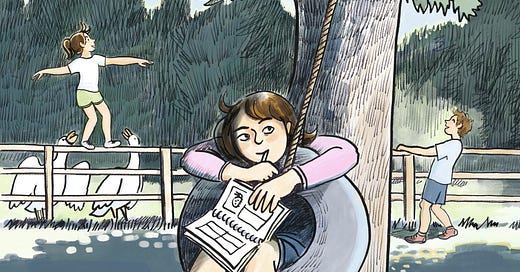



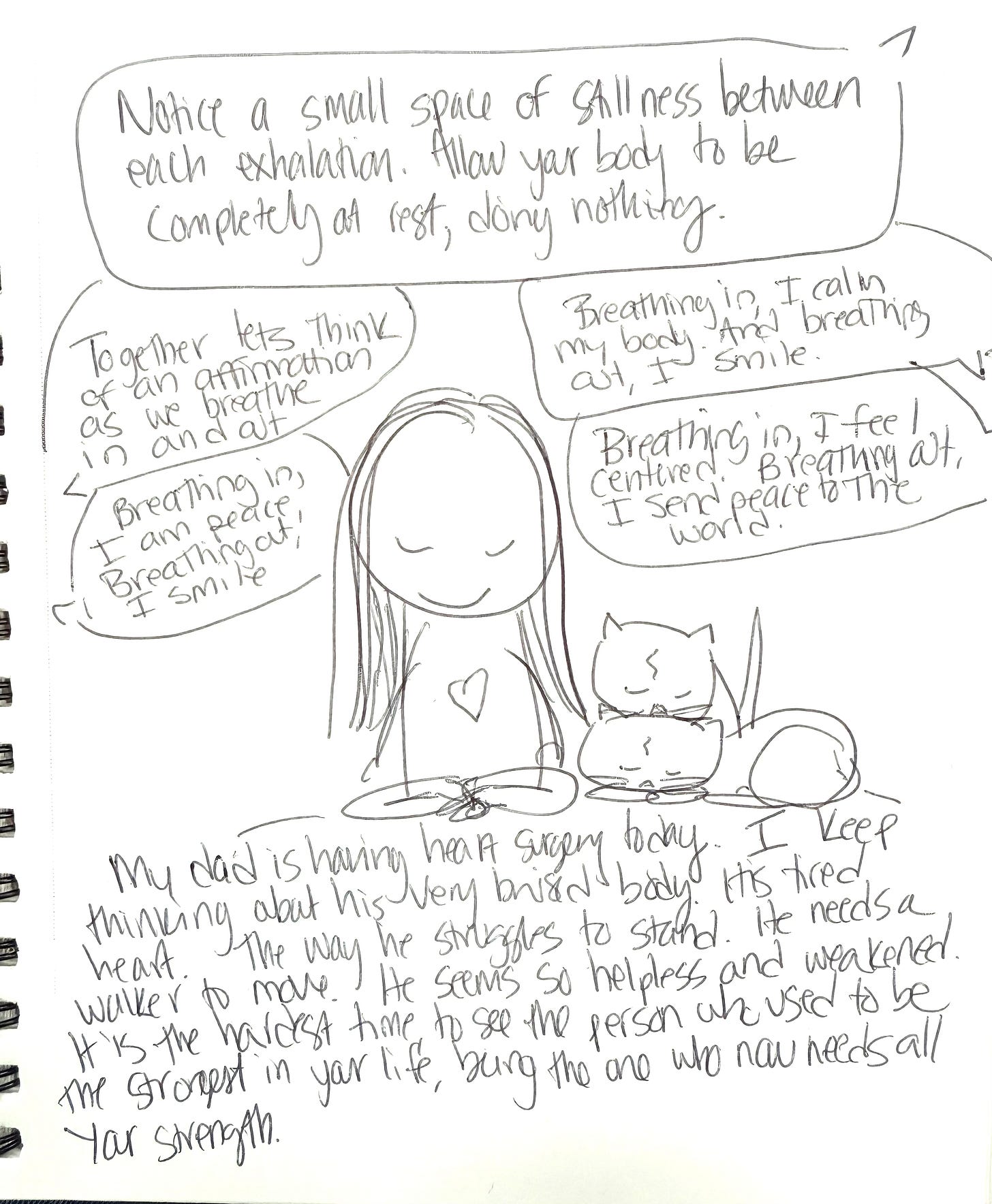
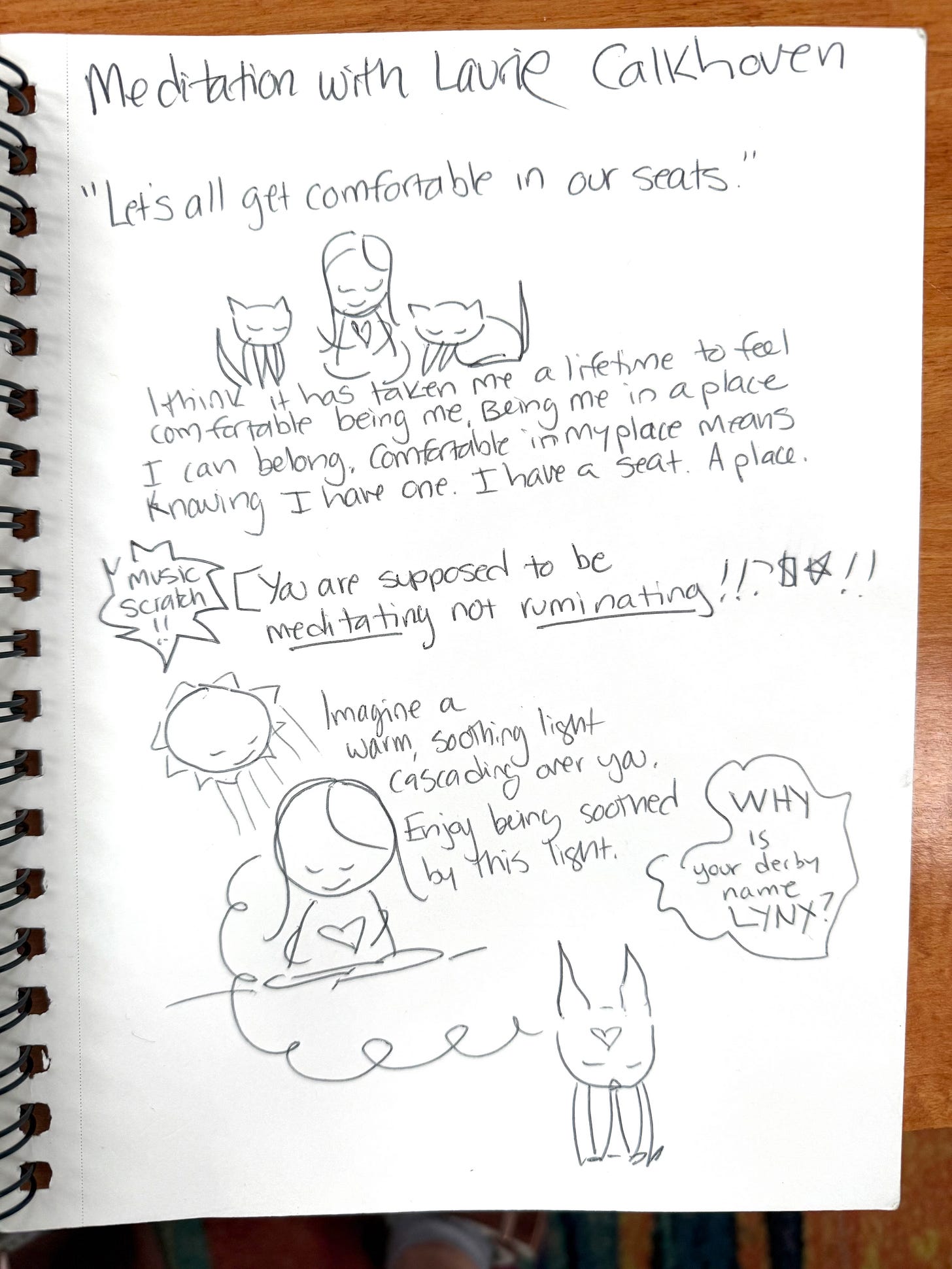
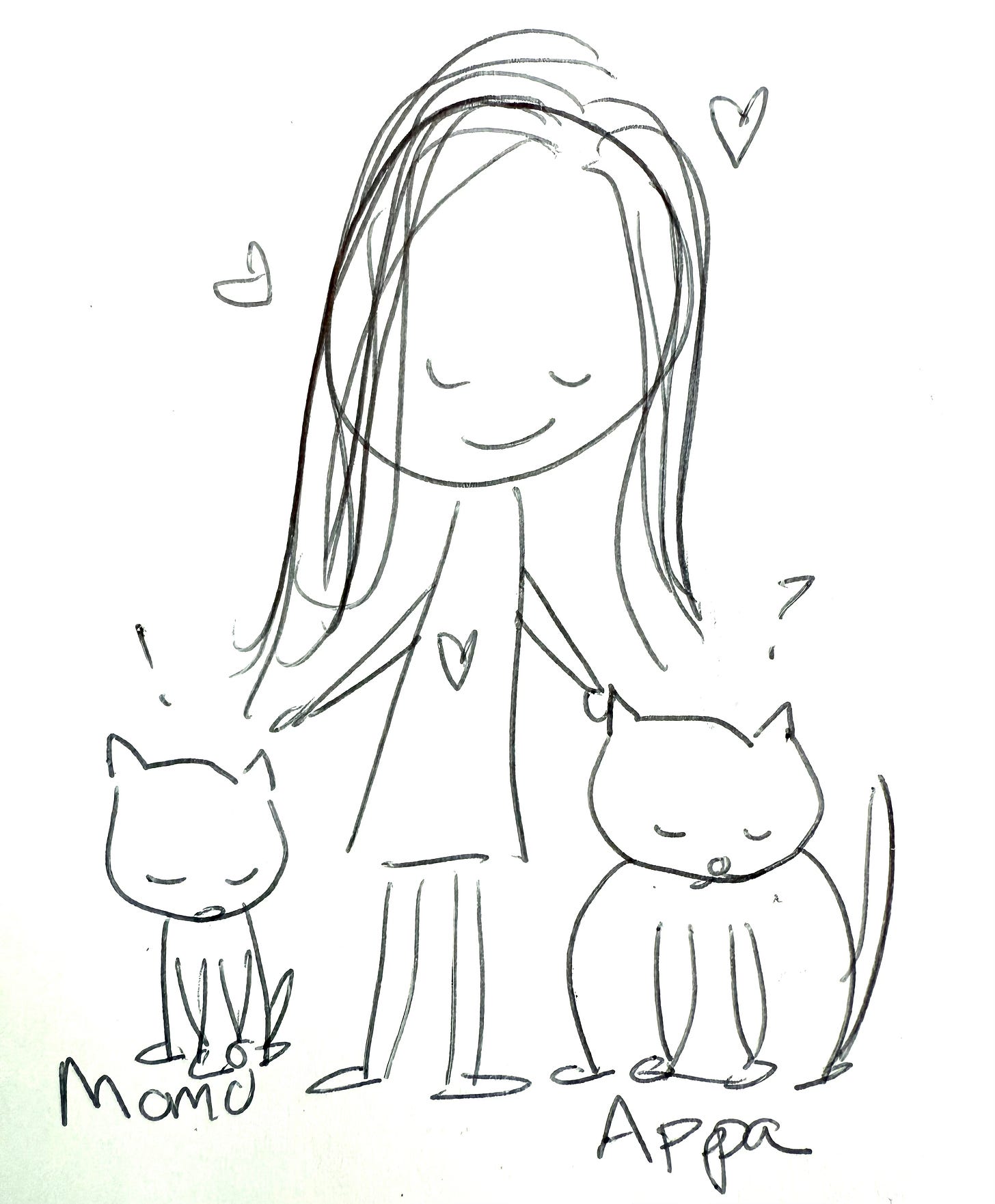
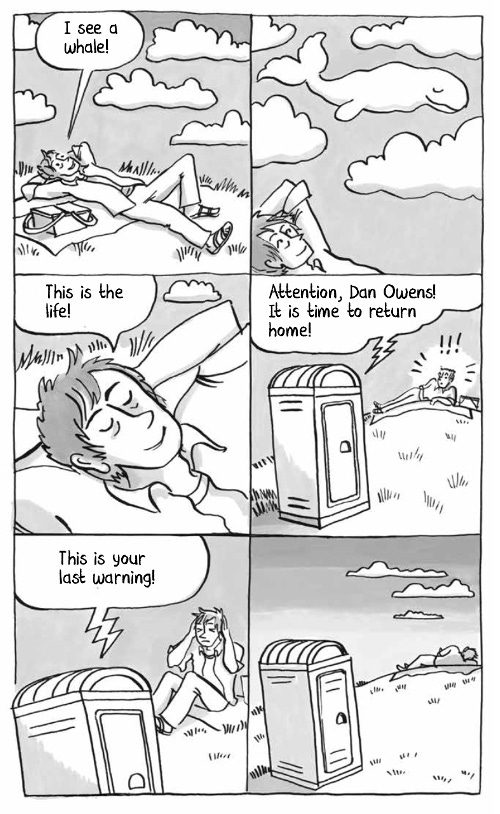




I absolutely love your drawings. I also love that you didn’t just give up on the meditation (I often give up on things) and you made it work for you. You’re a writer, you didn’t acknowledge your thoughts and then let them go to clear your mind, you wrote them down. Thank you for sharing this! Us readers and fans of yours gain so much from you, because you make us feel that we’re not alone. 💙
This is a beautiful reminder of how so many small pieces of life can come together to create the idea for a book, and how so many more sparks of inspiration and community will lend itself to a writer finding "the end". Thank you for sharing and shining, Jo! <3